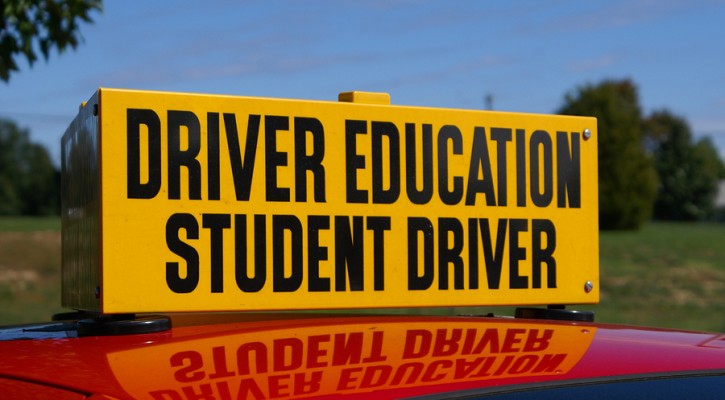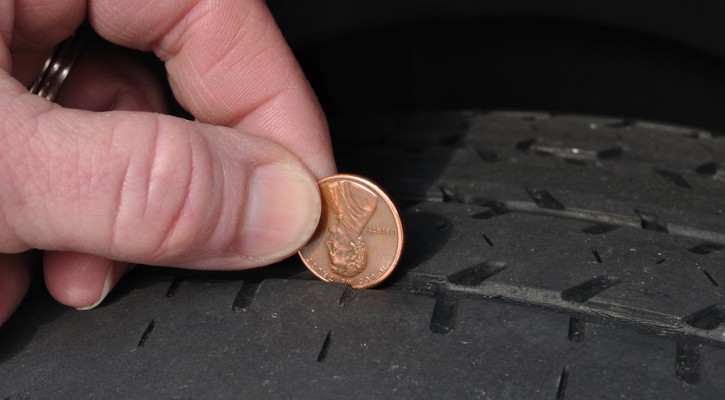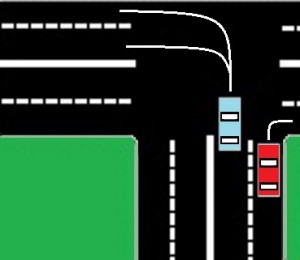
Teens With Drivers Ed Have Fewer Crashes and Tickets
September 12, 2014
Teens who complete Drivers Ed (DE) have fewer crashes and receive fewer traffic tickets than teens who don’t complete a drivers ed program according to a study published by the AAA Foundation. The difference between DE and non-DE teens, while small, are still statistically significant according to the researchers.
The study looked at a large number of teen drivers in the Province of Manitoba Canada and the State of Oregon. To determine a baseline, the studies surveyed teens who planned to take drivers ed and those who didn’t. Afterwards, they followed up with additional surveys, and performances in driver simulations. They also looked at scores on the driver’s exam and driving records.
In Oregon, the study compared the driving records of a total of 94,342 DE and non-DE teen drivers and found:
- DE teens had significantly fewer crashes than non-DE teens over the first 18 months of independent driving.*
- DE teens had 4.3% fewer crashes than non-DE teens during the entire period of the study.
- DE teens had significantly fewer convictions for traffic offenses than non-DE teens during the first 18 months of independent driving.*
- DE teens had 39.3% fewer convictions for traffic offenses than non-DE teens during the entire period of the study.
* Teenagers’ crash and near-crash rates were nearly 4 times the rates of adults during the 18 months following licensure. (Insurance Institute for Highway Safety)
In both Oregon and Manitoba, the researchers found that:
- DE teens had a slightly better knowledge of safe driving practices.
- DE teens were more knowledgeable of and more supportive of Graduated Driver License (GDL) laws.
Even though the differences were small, that still means a significant number of teens were spared injury and possibly death in a traffic collision. Lower traffic conviction rates mean lower insurance rates and less money spent on traffic fines.
In previous articles we have made the case that the US has one of the the worst driver training program for teens in the industrialized world. Most European countries not only require a classroom drivers ed course but also a significant number of hours behind the wheel with a trained and licensed driving instructor before they can apply for a license. In Canada, if you don’t take a drivers ed course, you must wait until age 16 before applying for a learner’s permit. After one year on a learner’s permit, the teen can apply for a “novice” driving permit by passing a road test. After two years of incident free driving as a novice driver, they must pass another road test to get a full license.
In the US, we depend on parents to teach a teen to drive and, usually, those parents lack the proper training to teach their child how to drive. After only one year of supervised driving and passing the road test, there are few limits on a teen’s solo driving.
High school drivers ed programs are rapidly disappearing because, when school budgets have to be cut, drivers ed is usually one of the first programs to go. In the Oregon study mentioned above, out of the 94,342 teen drivers observed, only 22 percent had taken a drivers ed course.
If your teen’s school doesn’t offer a drivers ed course, consider enrolling the teen in a private, state approved course. It might just save his or her life.

Ask The Driving School Instructor: Left Turn
September 8, 2014
Question: When making a left turn at an intersection, can you end the turn in any lane?
Answer: In most states, whether turning left or right, you must turn into the nearest lane. In other words, if you’re making a right turn from the right lane, you should turn into the far right lane of the street you are turning onto. If making a left turn, you should turn into the left lane.
Florida law is a little different from most states. Under Florida law, you must still make a right turn from the right lane into the right lane. However, when making a left turn, you may turn into “any lane lawfully available, or safe for the desired direction of travel.”
Let’s look at a scenario where it would be legal to turn left into any “lawfully available, safe” open lane. Let’s say, as soon as you turn left, you need to make a right turn into a parking lot. In that case, under Florida law, it would be legal to turn left into the far right lane as long as – and this is important – the far right lane is clear of traffic and you can safely move into that lane. If there is traffic in the lane you want to move into, you must move into the safest available lane and then move into your desired lane as soon as it’s safe to do so.
Unless you need to turn again, after making a left turn, the safest and smartest thing to do is to turn from the left lane into the left lane. Afterwards, if you need to move over into another lane, you should signal for a lane change, check to see if the lane is clear, and then move over. Remember that, under Florida law, you must use your turn signal whenever you are making a turn or when changing lanes.

Ask The Driving School Instructor: Overdriving Your Headlights
September 2, 2014
Question: What do they mean when they talk about overdriving your headlights?
Answer: Overdriving your headlights means driving too fast to be able to stop in the distance lit by your headlights. Automobile headlights are only effective for a certain distance. On average, with low beam headlights, you can only spot objects in the road for a distance of about 160 feet in front of your vehicle. With high beams, you can see about 450 feet ahead. Those distances don’t take into account the age, visual abilities of the driver, or road conditions. Your headlights can’t light objects over hills, around curves, or dips in the road and they’re even less effective in rain, fog or snow. Continue Reading

Teens Don’t Know How to Check The Tires
August 27, 2014
Almost half of teen drivers in the US don’t know how to check their tires for wear or proper pressure. Results from a study conducted by Michelin North America showed that teens aren’t getting basic vehicle maintenance training in state driver training courses or from their parents. Basic maintenance checks on tires, windshield wipers, fluid levels, and lights are an important part of driving safety yet the study shows that:
- 27% of teens never check the condition of their tires.
- 44% of teens don’t know how to check the tire tread for wear.
- 29% don’t know how to check the oil.
- 57% don’t know how to change the windshield wipers. Continue Reading

Ask The Driving School Instructor: Driving With One Hand
August 25, 2014
Question: Is it safe to drive with one hand?
Answer: I will say that it’s only safe to drive temporarily with one hand but not all the time. If you need to adjust a control such as the air conditioner or windshield wipers or to pick up something one hand on the wheel is fine. However, you shouldn’t get in the habit of driving with one hand all the time. Driving with one hand doesn’t give you full control over steering and it could hurt you very badly in certain circumstances. Let’s look at a couple of the ways that driving with one hand could be dangerous.
Driving distractions can be even more dangerous when driving with one hand. Most people tend to put their hand at the top of the steering wheel. If you were to to turn your body to look for or to reach for something, you may inadvertently pull the wheel in the direction your body is turning. If that happens while your eyes are off the road, you could drive over into the other lane or off the side of the road.
If you were suddenly involved in a traffic crash in which your airbag deployed, with one hand positioned at the top of the wheel, your hand and arm are going to be driven back into your face at 200 mph. It could break your arm and it isn’t going to do wonders for your face either.
Older drivers were taught to always keep their hands at the 9 or 10 o’clock and 3 or 2 o’clock positions on the steering wheel. Today, because of airbags, safety experts suggest keeping your hands lower on the wheel at the 8 and 4 o’clock positions. Don’t wrap your thumbs around the wheel. Instead, rest your thumbs on top of the wheel. With your hands and thumbs in this position, you’ll have more control and you’re less likely to be injured if your airbag deploys.

